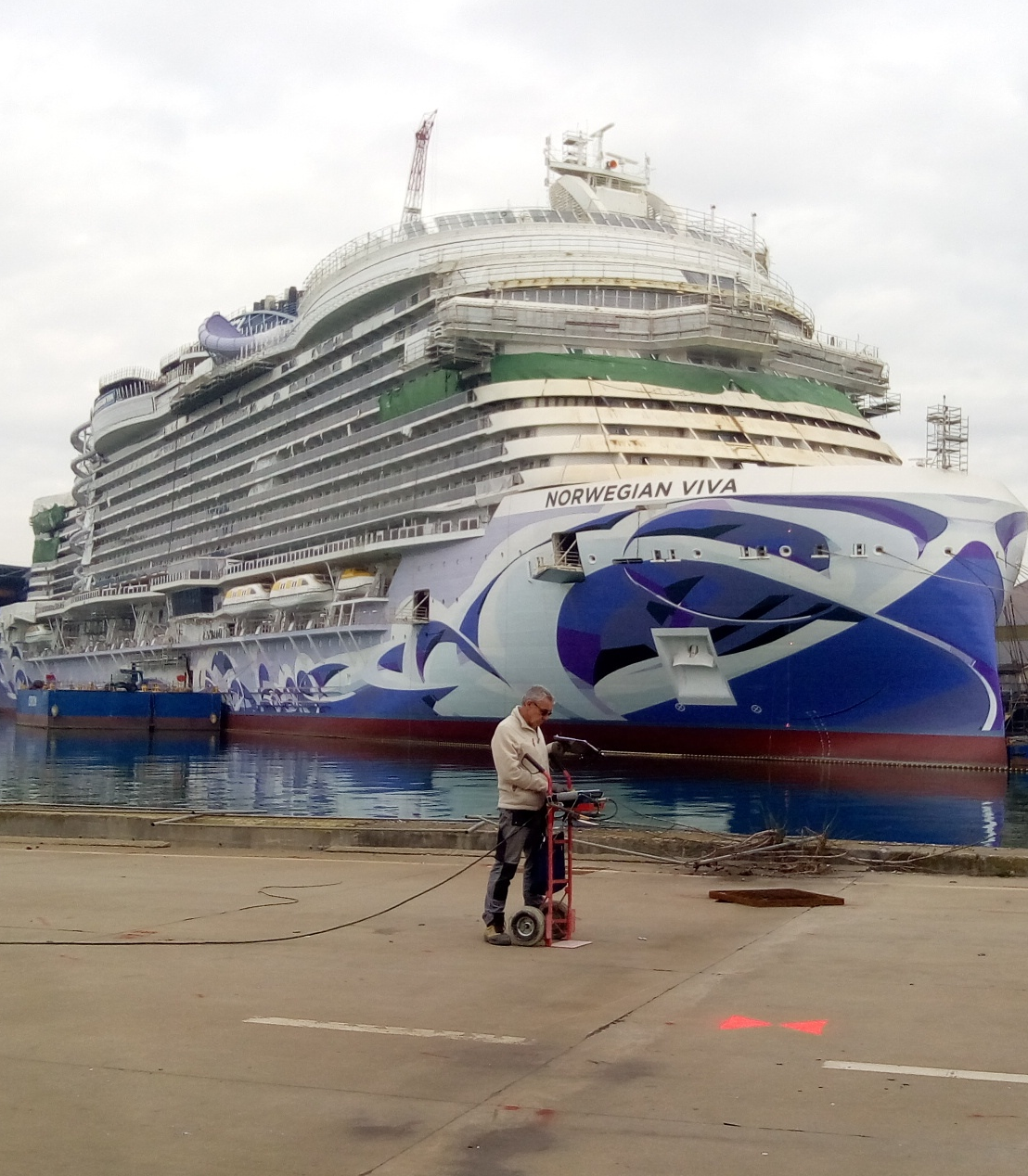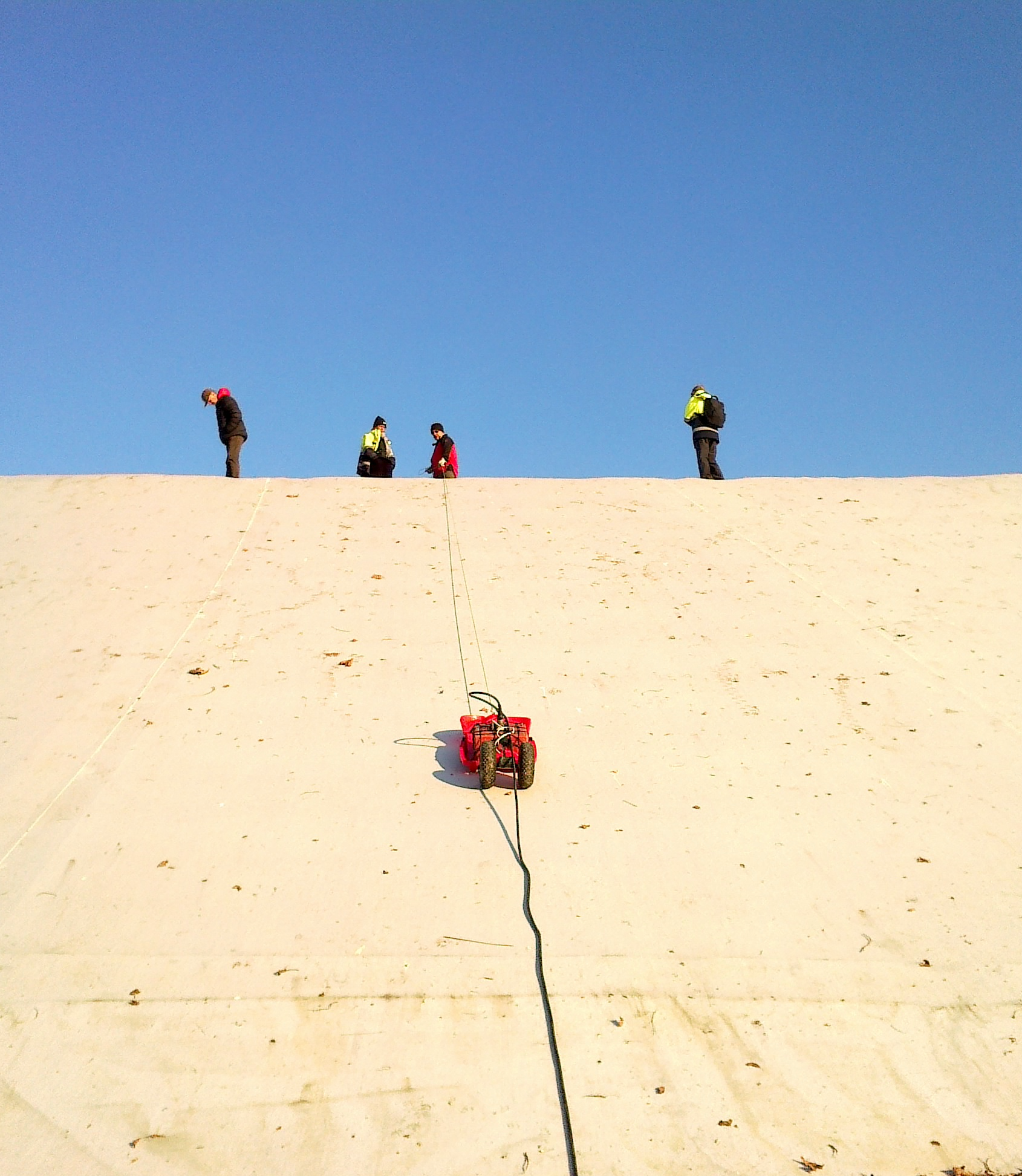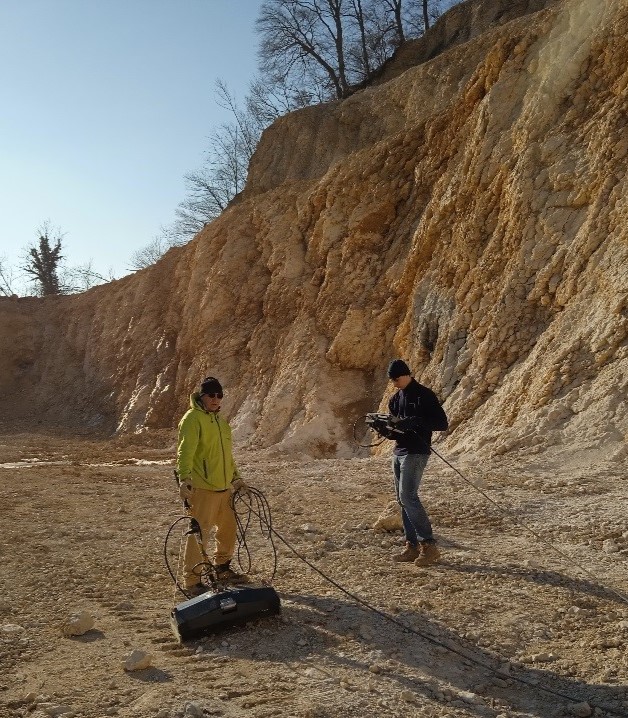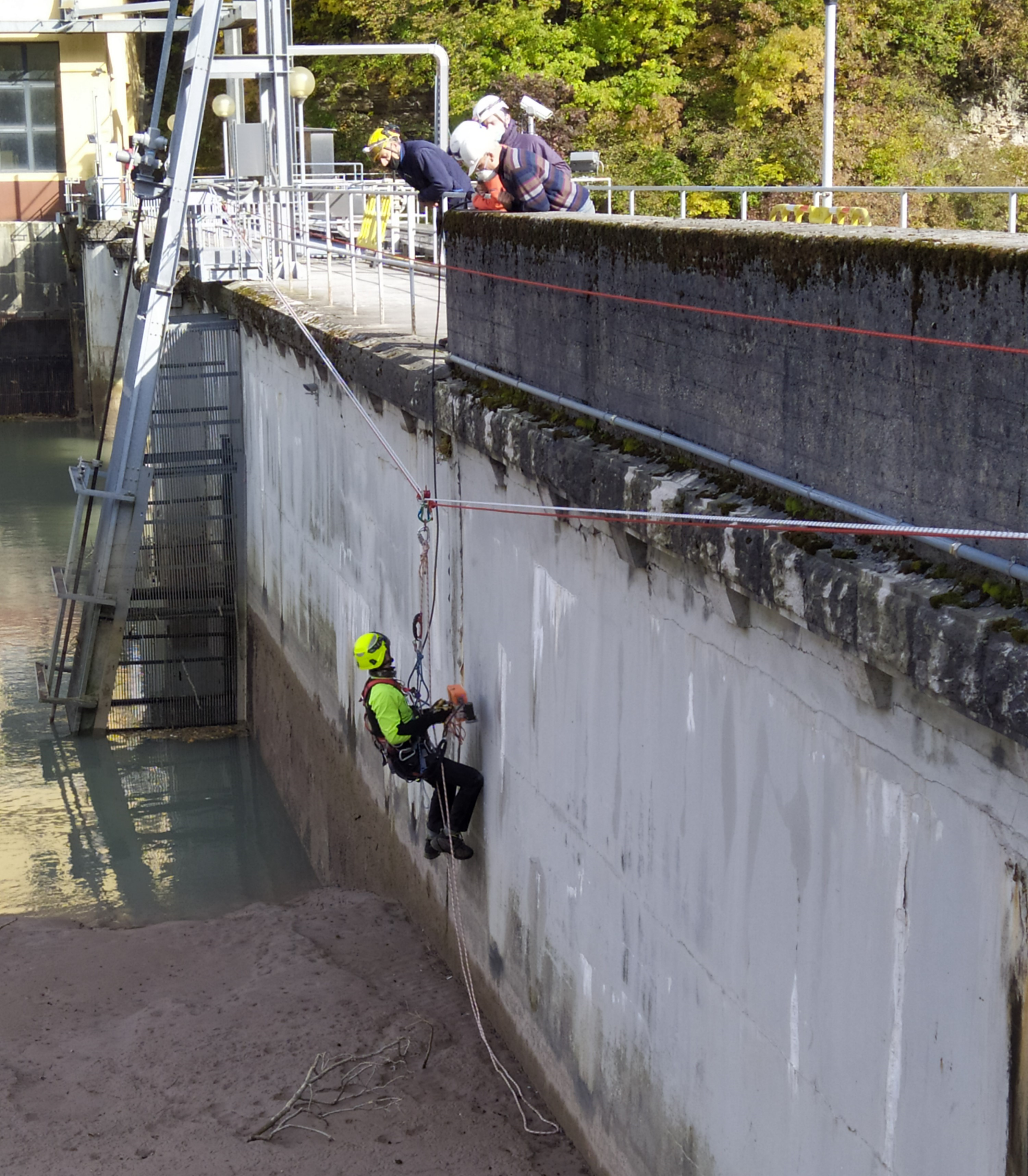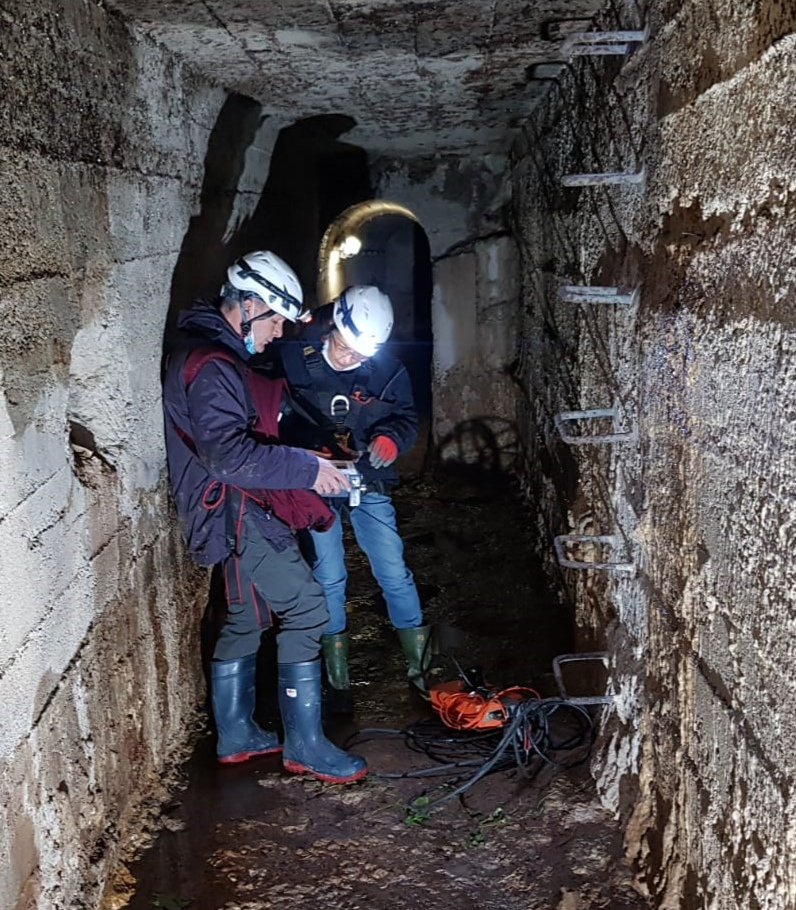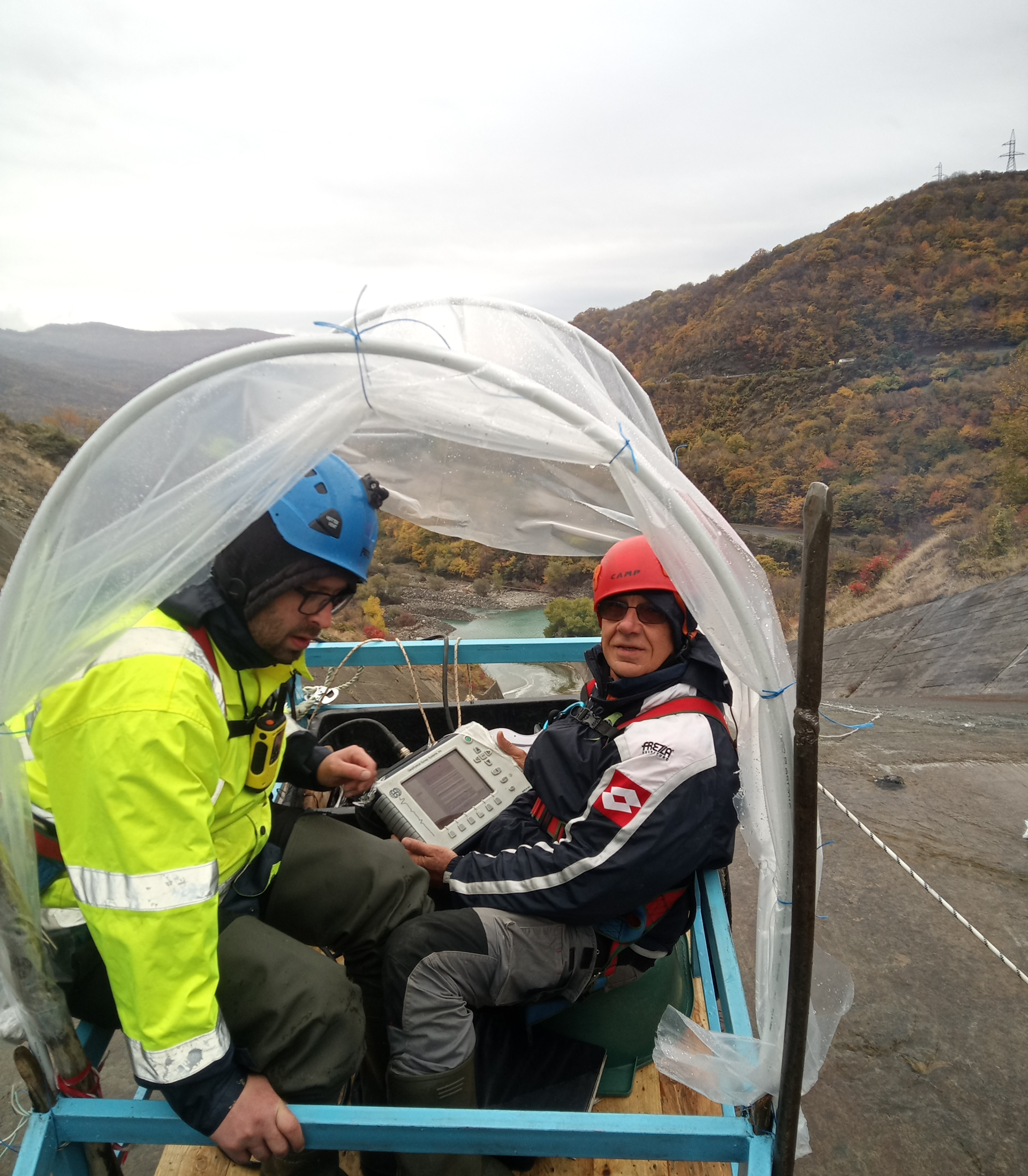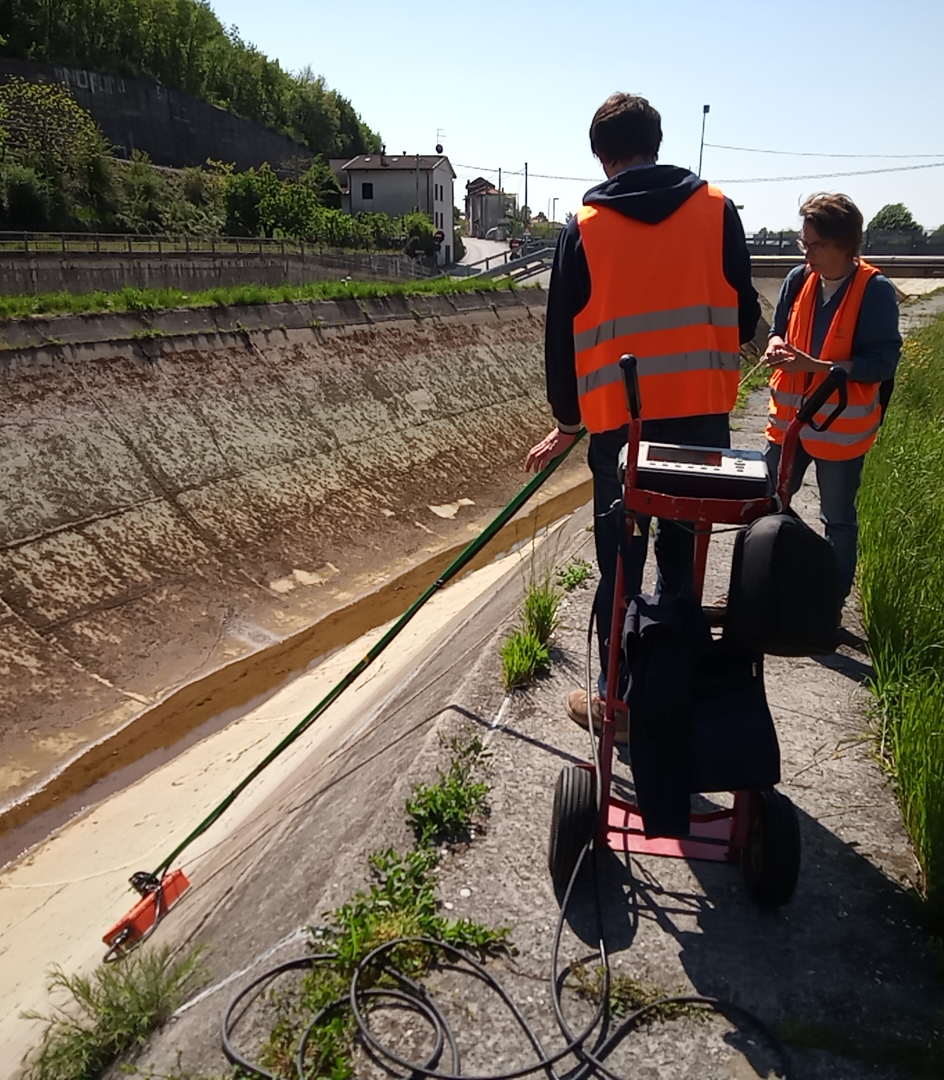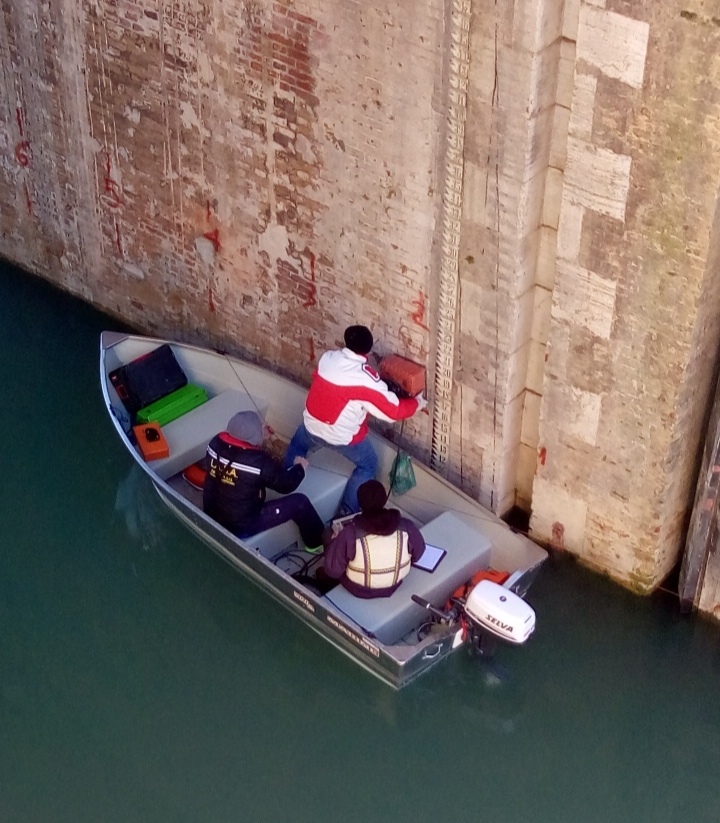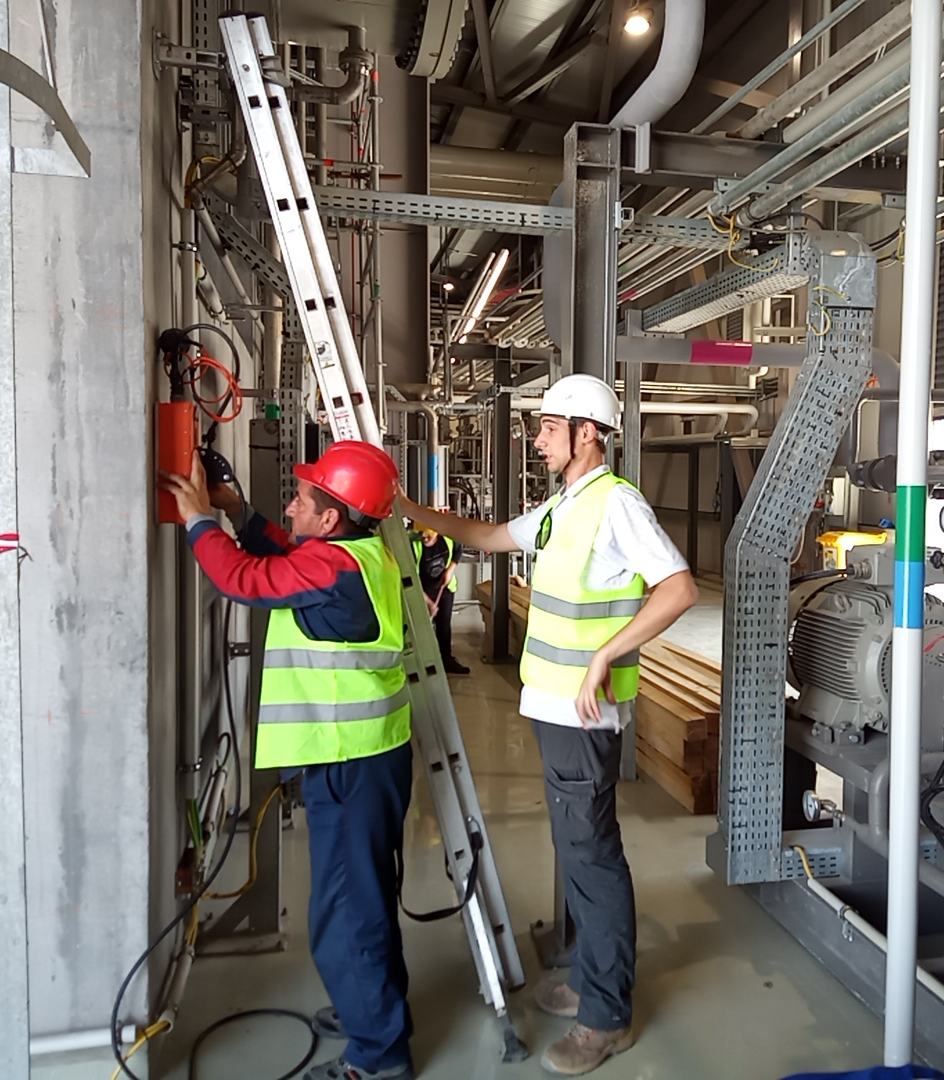Banchina del Canale delle Industrie Nord a Marghera (Venezia) -
Mappatura di sottoservizi
GPR METHODOLOGY
The G.P.R. methodology is basically similar to that of normal radars; an electromagnetic signal formed by a wave train of selected frequencies is sent by a transmitting antenna into the material to be investigated.
The reflected signals are received by the Rx section of the antenna and sent to the Control Unit (C.U.) for a preliminary processing to allow the display of acquired data. The result is a vertical section of the scanned material with the reconstruction of the geometry of the reflecting interfaces and objects.
Considering that the antenna transmits several signals per second, usually from 100 to more than 800, a single meter is interested by a high number of signals giving the possibility to reconstruct the structure with high detail.
Typical applications in order of increasing antenna frequency are mapping the fracturation of rocks, investigation of the subsoil, investigation inside mines and tunnels, archaeology, underground utilities, high resolution inspection of concrete in basements, pillars dam’s spillway, detection of fractures in concrete elements.
The range of investigation depends on the conductivity of the inspected materials and can even reach tens of meters in rock and ice but normally is limited in a few meters with medium to low frequencies.
The reflected signals are received by the Rx section of the antenna and sent to the Control Unit (C.U.) for a preliminary processing to allow the display of acquired data. The result is a vertical section of the scanned material with the reconstruction of the geometry of the reflecting interfaces and objects.
Considering that the antenna transmits several signals per second, usually from 100 to more than 800, a single meter is interested by a high number of signals giving the possibility to reconstruct the structure with high detail.
Typical applications in order of increasing antenna frequency are mapping the fracturation of rocks, investigation of the subsoil, investigation inside mines and tunnels, archaeology, underground utilities, high resolution inspection of concrete in basements, pillars dam’s spillway, detection of fractures in concrete elements.
The range of investigation depends on the conductivity of the inspected materials and can even reach tens of meters in rock and ice but normally is limited in a few meters with medium to low frequencies.
